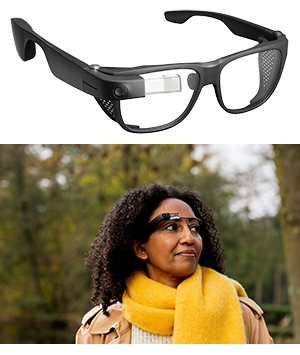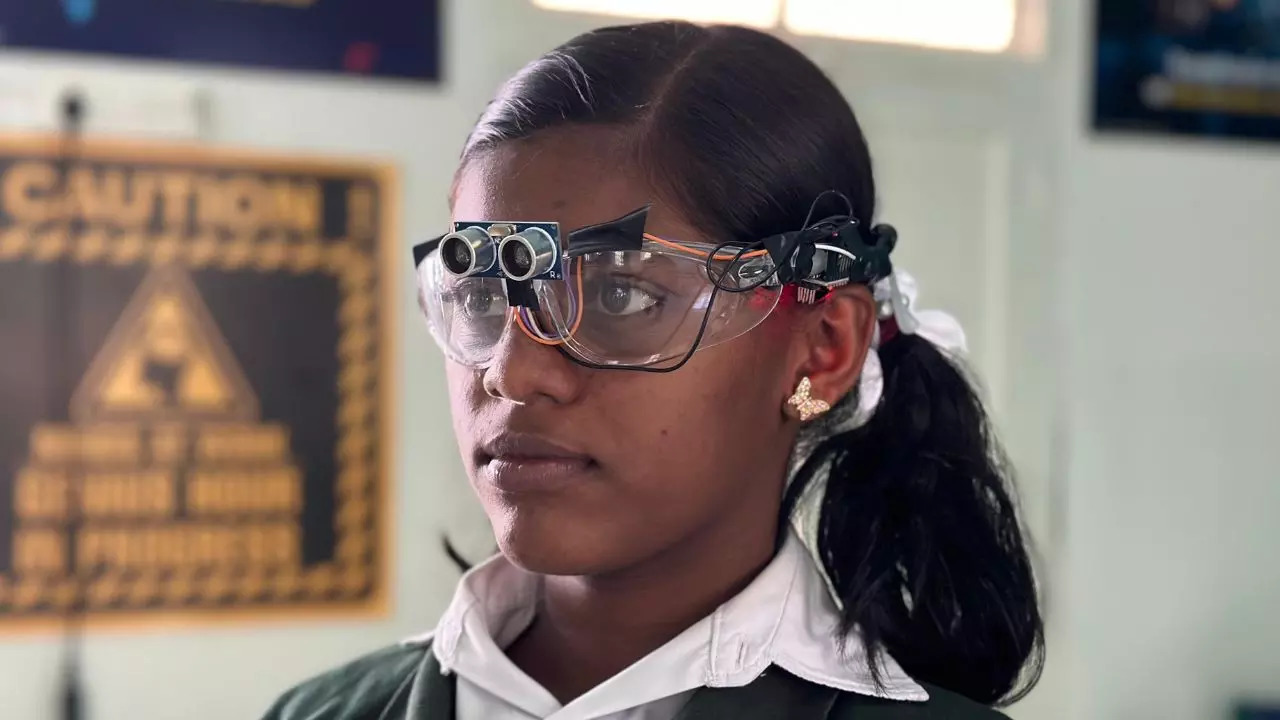Mobility Aids for Visually Impaired Users: Enhancing Independence and Navigation
Enhancing Ease Of Access Through Assistive Technology for the Blind
The combination of assistive technology for the blind stands for an essential innovation in access, essentially modifying just how individuals browse their environments and engage with society. As we discover the varied kinds of assistive devices and their tangible influences on daily living, it comes to be necessary to analyze how recurring technological advancements are improving the landscape of support for the blind community.
Overview of Assistive Technology
Assistive technology refers to a variety of devices and software created to boost the abilities of people with disabilities, consisting of those who are visually impaired or blind. This innovation plays a critical role in advertising self-reliance and boosting the lifestyle for individuals. By supplying alternative methods for accessing details and performing everyday tasks, assistive innovation equips individuals to browse their environments better.
The advancement and implementation of assistive technology accept a selection of concepts focused on promoting availability. These concepts include user-centered style, which focuses on the requirements and choices of the person, and the combination of innovation right into everyday tasks. Such developments make sure that assistive tools are not only functional however simple and also user-friendly to make use of.
Additionally, assistive modern technology includes a varied range of services, from low-tech alternatives like magnifiers to sophisticated technologies such as screen viewers and Braille displays. The ongoing evolution of this area is driven by the requirement to address the one-of-a-kind obstacles dealt with by people with visual disabilities (Wearable technology for low vision). As technology remains to development, the potential for boosting availability and advertising inclusivity remains encouraging, inevitably adding to an extra fair society

Kinds Of Assistive Tools
Numerous kinds of assistive tools are available to sustain people that are visually damaged or blind, each developed to address certain needs and difficulties. These gadgets can be extensively categorized right into three main types: low-tech, mid-tech, and state-of-the-art options.
Low-tech devices include things such as magnifiers, Braille tags, and tactile maps. These are relatively straightforward tools that boost the user's capacity to connect with their environment without needing complex innovation.
Mid-tech devices commonly involve a lot more sophisticated functions, such as digital magnifiers and portable Braille note-takers. These gadgets can offer performances like speech result, enabling customers to gain access to details much more successfully.

Effect on Daily Living
The schedule of various assistive devices dramatically improves the lifestyle for individuals who are aesthetically damaged or blind, impacting their everyday living in extensive means. By incorporating modern technologies such as screen readers, Braille presents, and audio description services into their routines, individuals gain better freedom and self-reliance. These devices help with access to information, allowing people to perform day-to-day jobs, such as reviewing emails, navigating public areas, and taking pleasure in media content.
In addition, assistive tools empower people to involve even more fully in social communications and neighborhood tasks. The capability to utilize smart devices geared up with availability features permits seamless interaction and connection with others. This connection cultivates a sense of belonging and lowers feelings of isolation.
In specialist setups, assistive technology supports efficiency by permitting individuals to complete job tasks effectively. Devices like voice recognition software program and specialized magnification gadgets make it possible for individuals to take part in the labor force on equivalent ground with their sighted peers.

Improvements in Innovation
Current technological innovations have actually considerably transformed the landscape of devices readily available for people who are blind or aesthetically damaged. The integration of artificial intelligence (AI) and artificial intelligence has offered rise to applications that enhance navigating and things recognition. As an example, mobile phone apps can currently use AI to identify and explain surroundings in real-time, supplying individuals with useful contextual info.
Additionally, advancements in haptic modern technology have brought about the development of clever canes geared up Full Report with sensing units that find challenges and provide tactile responses. This empowers users to browse their environment with raised self-confidence and freedom. Moreover, innovations in text-to-speech software program and braille display screens have actually boosted the accessibility of electronic material, enabling smooth communication with numerous media.
Wearable modern technologies, such as smart glasses, are additionally making strides in helping visual disability. These tools can supply enhanced reality experiences, superimposing important details onto the individual's area of sight. Jointly, these improvements not just boost the lifestyle for individuals who are blind however also advertise better incorporation in society. As technology proceeds to develop, the potential for much more transformative devices remains on the horizon.
Future Trends and Innovations
As technology swiftly advances, the future of assistive tools for individuals who are blind holds enormous pledge. Technologies in expert system (AI) and equipment learning are positioned to transform the way blind individuals connect with their environments. As an example, AI-driven applications are being created to enhance things acknowledgment, permitting customers to recognize and browse their environments with better convenience and accuracy.
Furthermore, innovations in haptic feedback innovation are allowing the development of responsive maps and navigating aids that give real-time details via touch. These innovations not only boost movement yet also foster independence. In addition, wearable gadgets geared up with increased truth (AR) functions are arising, providing users visual details via audio descriptions, therefore connecting the void between the electronic and physical globes.
Furthermore, the assimilation of wise home innovation presents new chances for availability, enabling individuals to manage their living settings via voice commands or smartphone applications. As collaboration in between tech programmers and the blind neighborhood continues, the concentrate on user-centered style will make sure that future advancements are tailored to satisfy the distinct needs of this population (Wearable technology for low vision). The trajectory of assistive technology promises an extra inclusive and empowering future for individuals that are blind
Conclusion
Finally, assistive innovation plays a vital role in improving availability for individuals with visual impairments. The varied range of tools, including screen viewers and smart walking canes, substantially improves day-to-day living and fosters self-reliance. Continuous advancements in technology and user-centered style make certain that these devices cater effectively to the distinct requirements of the blind area. As innovations progression, raised inclusivity and empowerment can be expected, inevitably enhancing the quality of life for those influenced by visual disabilities.
The combination of assistive technology for the blind represents a crucial innovation in availability, fundamentally changing how individuals navigate their atmospheres and involve an eye doctor is called with society.Assistive innovation refers to a range of tools and software application created to boost the contact eye exam price capacities of individuals with impairments, consisting of those who are visually impaired or blind. Wearable technology for low vision.As innovation swiftly proceeds, the future of assistive devices for individuals that are blind holds immense promise. The trajectory of assistive modern technology promises a more inclusive and empowering future for people that are blind
In final thought, assistive innovation plays a critical duty in boosting access for individuals with aesthetic problems.